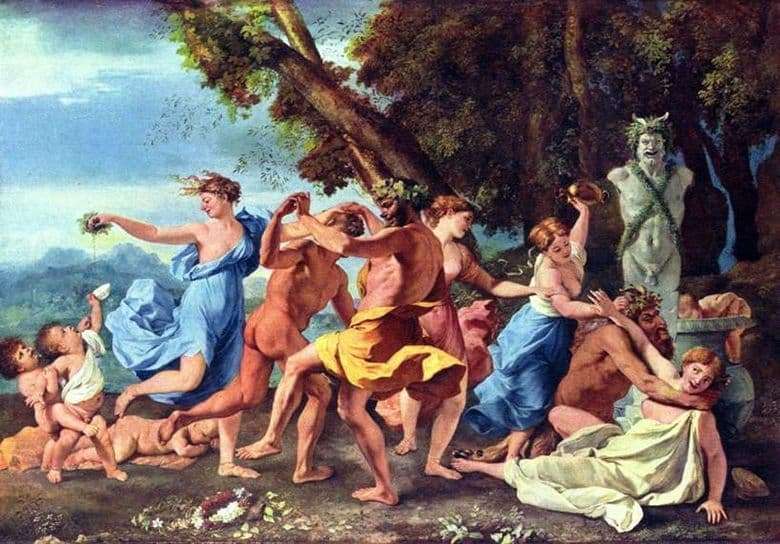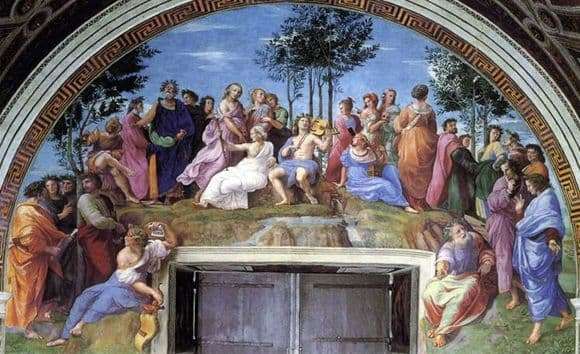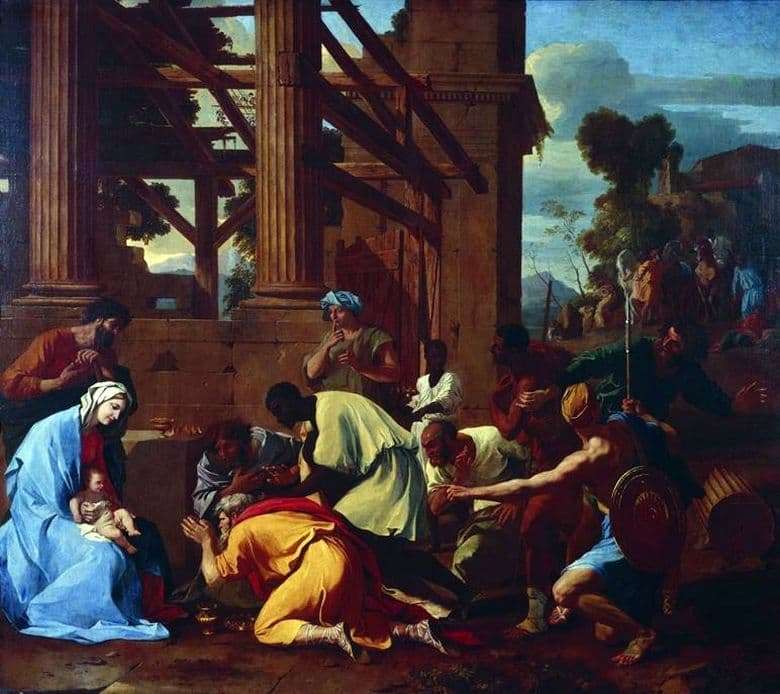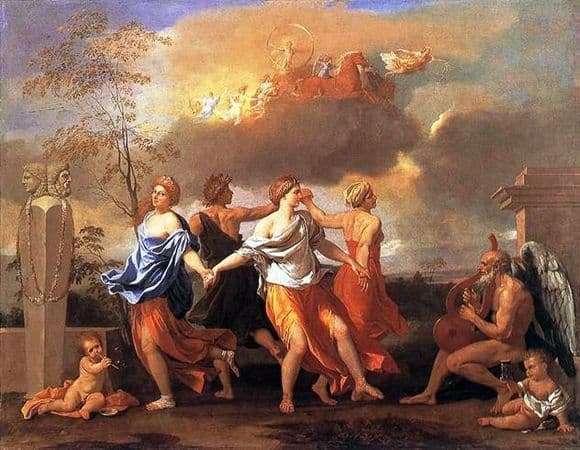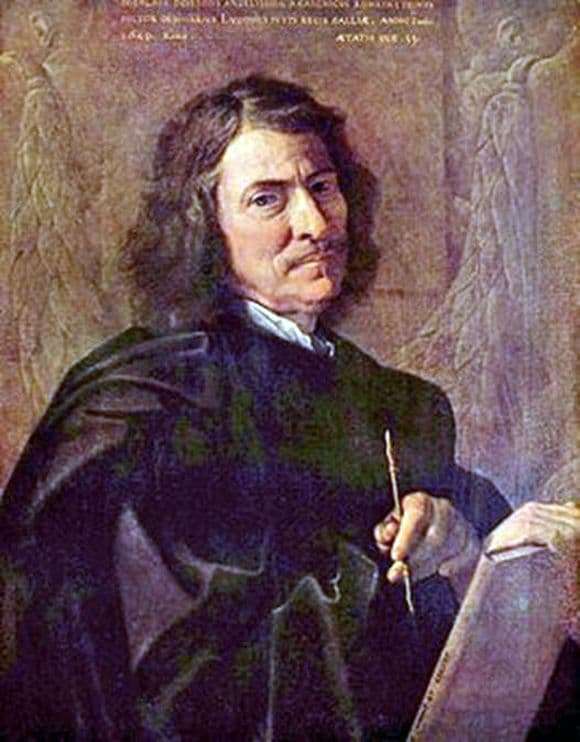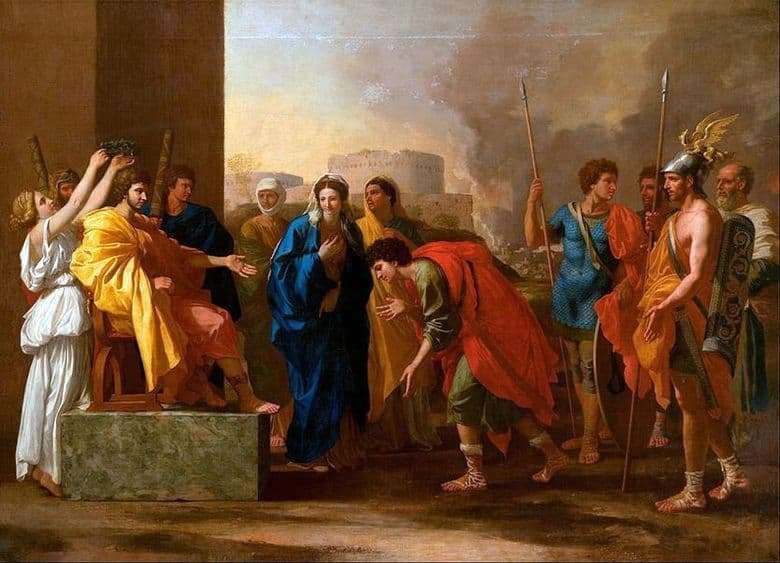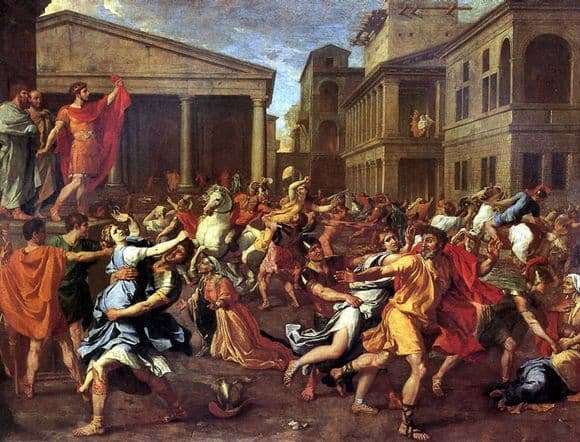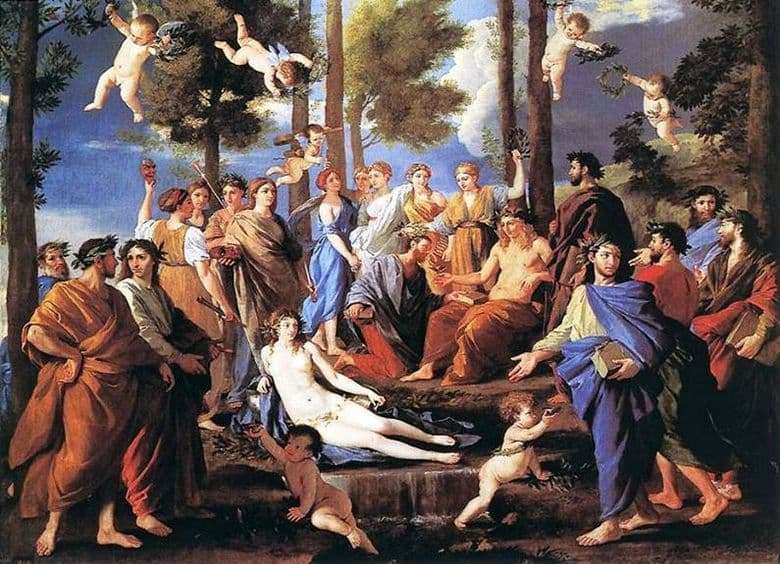
The bright and vivid picture of Parnassus depicts gods, poets, nymphs and other heroes of Greek mythology and history. This is a very characteristic work of Poussin, which combines all the features of his artistic style. The plot of the canvas is taken from the fresco painted by Raphael, adorning the Sistine Chapel.
Parnassus is the famous mountain in Greece, the abode of Apollo. Here inspiration, music and poetry are born. We see a beautiful god surrounded by muses and worshipers. Some have musical instruments, books and laurel wreaths in their hands – a symbol of victory, glory and success.
With this wreath, Apollo awards Homer, in whose image he captures the famous representative of Baroque poetry and a close friend of the artist, Mr. Marino. The nude figure in the center of the picture is Kastalia, a nymph who according to legend turned into a stream to get rid of Apollo’s insistent attention.
In the lower part of the canvas there are cupids depicting the thickets with Kastal water. It is designed to give inspiration to artists.
The picture creates high spirits, leads to sublime thoughts. All thanks to the captured atmosphere of well-being and virtue, mutual respect and love for creativity. A large number of actors, the abundance of colors and details allows us to look at the picture again and again with interest.
Poussin uses a contrasting combination of warm and cold tones, and the technique of writing cloth and clothes and the arrangement of the characters around indicate that the traditions of painting in Italian revival are used. The artist was inspired by the talent of Titian and the aforementioned Raphael.
The work is an excellent ode to the ancient Greek era, the main basis of which has always been the elevation of man, his intellect, high morality and beauty.
Description of the painting by Nikolas Poussin “Parnassus”
